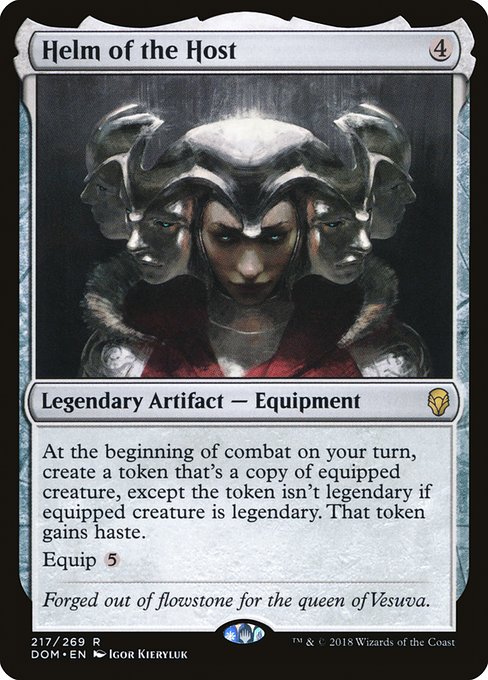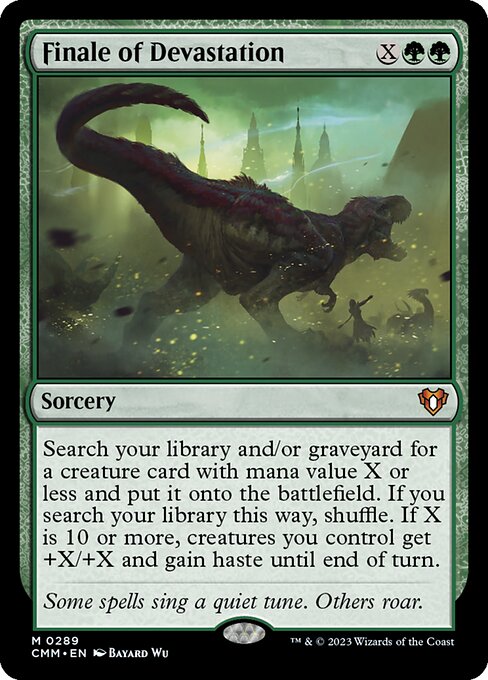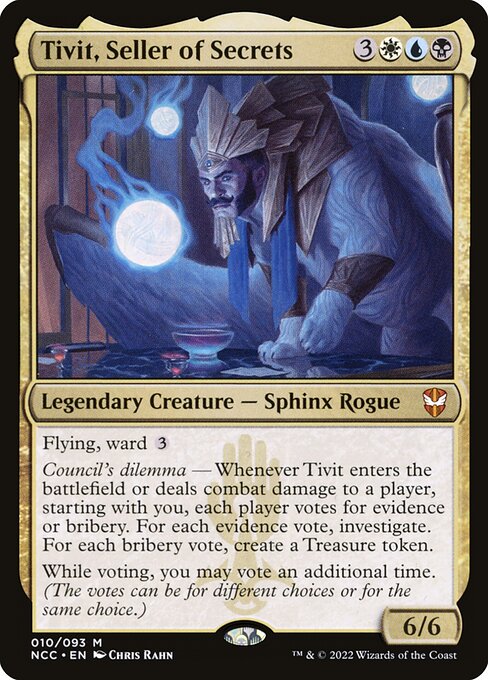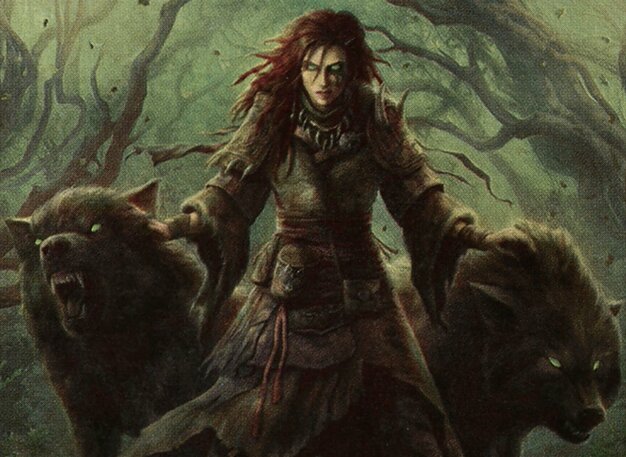Deck & Commander Strategies

Zimone and Dina
A mid-range grind deck that uses the commanders as a combo engine, aiming to win through Oracle or Finale of Devastation combos after stabilizing the board.
Krark and Sakashima
A mid-range storm deck leveraging Krark’s ability to bounce spells and Sakashima’s cloning for massive card advantage and storm count to win via storm combos.

Godo, Bandit Warlord
A mono-red combo deck that aims to win by using Godo with Helm of the Host to generate infinite combat steps and deal lethal damage.

Tivit, Seller of Secrets
A mid-range control deck that uses Tivit’s ability to take infinite turns for a combo finish, relying on the One Ring and other control elements to protect the combo.
Gameplay Insights
- 1
The priority to counter the One Ring early shaped the table’s interaction, as it was recognized as a major threat enabling Tivit’s combo.
- 2
Managing mana resources carefully was critical, especially for Tivit, who needed to build up mana to execute the infinite turn combo while holding counters.
- 3
Players debated the merits of countering different spells, weighing whether to slow down Tivit’s engine or address other emerging threats like Rustic Study or mana acceleration.
- 4
The use of recursive spells by Krark and Sakashima generated significant card advantage, pressuring opponents to disrupt their storm count before it became overwhelming.
- 5
Godo’s game plan relied on assembling Helm of the Host with Godo for a one-card infinite combat step combo, putting pressure on opponents to act quickly.
- 6
The game highlighted the delicate balance in cEDH between racing to combo off and disrupting opponents’ combo pieces, with timing of spells and counters often deciding the outcome.
Notable Cards
-

Helm of the Host
-

Oracle of Mul Daya
-

Finale of Devastation
-

Command Beacon
-

Defense Grid
Gameplay Summary
The game featured a highly competitive four-player cEDH match with commanders Zimone and Dina, Krark and Sakashima, Godo, Bandit Warlord, and Tivit, Seller of Secrets.
Early turns saw the players establishing their mana bases and setting up key pieces, with Tivit quickly assembling a One Ring that provided card draw and protection, posing a significant threat.
Other players acknowledged the urgency of dealing with Tivit’s One Ring to prevent an inevitable combo finish involving infinite turns.
Throughout the match, the tension focused on managing this threat while developing their own strategies. Zimone and Dina focused on a mid-range grind strategy aiming to combo off with Oracle or Finale of Devastation, while Krark and Sakashima leveraged spell recursion and storm synergies to generate explosive card advantage.
Godo sought to combo with Helm of the Host for infinite combat steps and damage.
Meanwhile, Tivit’s deck aimed to control the board and eventually take infinite turns to close out the game.
Key decision points revolved around prioritizing interaction, managing mana efficiently, and timing counters to delay or disrupt the One Ring and other combo engines. The game’s pivotal moments included countering critical spells, navigating mana constraints, and players debating the optimal targets for disruption.
The balance of aggression and defense, along with the threat assessment of each commander’s potential, shaped the flow of the match.
While the transcript cuts off before the conclusion, it is clear the game was a tense battle of resource management and timing, with each deck working toward its unique win condition while carefully watching the others’ explosive potential.







































![IS DOCKSIDE EXTORTIONIST TOO STRONG? | MAMTG cEDH S4 E20 | [MTG cEDH Gamplay] | thumbnail](https://i.ytimg.com/vi/t1GiGbW9lGw/sddefault.jpg)




![Favorite Precon Upgrade of 2022 [Commander VS 324] | Magic: the Gathering Commander Gameplay thumbnail](https://i.ytimg.com/vi/bNtpdfoanxo/sddefault.jpg)
![Baldur's Gate Crossover [Commander VS 294] | Magic: the Gathering Commander Gameplay thumbnail](https://i.ytimg.com/vi/2KdxY6y7pro/sddefault.jpg)







![Necropotence v One Ring: who needs life? [S2G2] TIVIT v NAJEELA v ROG/SI v KRARKASHIMA thumbnail](https://i.ytimg.com/vi/AbWVe3oZO5Q/sddefault.jpg)
![Interaction can really be a DRAIN [S1G13] cEDH LEAGUE FIRST SLIVER v ANIMAR v KRARKASHIMA v TIVIT thumbnail](https://i.ytimg.com/vi/Yc770YqKUx0/sddefault.jpg)








